This past year was a very visible one for Deaf Culture and American Sign Language. From viral videos to late night TV appearances, mainstream audiences just couldn’t get enough of Deaf superstars or their fascinating visual language. As we leave 2014, let’s take a look back at some of the most memorable Deaf pop culture moments of this year, and hope that 2015 brings even more awareness!
 20. KODA Signs Holiday Concert for Deaf Parents:
20. KODA Signs Holiday Concert for Deaf Parents:
Okay, technically this happened in December 2013, but it’s so cute I couldn’t leave it out! Kindergartener Claire Koch decided to use ASL at her school holiday concert to make sure her Deaf family members could enjoy the performance, and it was adorable. So adorable, that the video her mother posted went viral with over 8 million views to date!
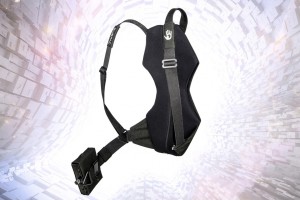 19. New Technologies Present New Possibilities:
19. New Technologies Present New Possibilities:
Each year, new technologies emerge which attempt to simplify and improve the lives of deaf individuals. A number of companies are working on different sign-to-speech translation solutions; while others are taking creative approaches to speech-to-text. One of my favorite ideas of 2014 is the StudioFeed music backpack, which turns music into a full body experience.
 18. Deaf Interpreter demonstrates what equal access really looks like at Atlanta PRIDE:
18. Deaf Interpreter demonstrates what equal access really looks like at Atlanta PRIDE:
Deaf interpreter David Cowan is a known favorite among Deaf LBGT individuals for his expressive and appropriately flamboyant work each year at Atlanta PRIDE. Across the country, PRIDE festivals tout themselves as all-inclusive events. Hiring a Deaf Interpreter that deaf/HoH audiences adore is a beautiful example of equality.
 17. People in Costumes Using ASL with Kids:
17. People in Costumes Using ASL with Kids:
From mall Santas to baseball mascots— the people behind the characters have been doing their diversity homework! This year, there were a number of heartwarming stories and videos featuring deaf children who are overjoyed to discover that their favorite characters can communicate with them using ASL. Learning even a few simple phrases can help deaf kids feel included!
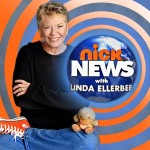 16. “Now Hear This” Premiers on Nickelodeon
16. “Now Hear This” Premiers on Nickelodeon
It was pretty inspiring to see a children’s television network take a genuine interest in Deaf Culture. This Nick News special focused on the lives of several deaf young people across the country, and showcased how there are many different ways to be a deaf person in a hearing world.
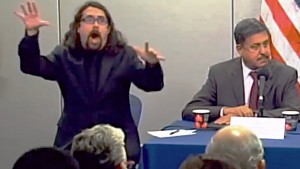 15. Deaf Interpreter goes Viral After NYC Ebola Press Conference
15. Deaf Interpreter goes Viral After NYC Ebola Press Conference
As Mayor Bill de Blasio delivered critical information to the citizens of New York regarding the Ebola virus, Deaf Interpreter Jonathan Lamberton addressed the deaf population. Many hearing individuals were fascinated by Lamberton’s dramatic signing style, as it was the first time they had ever seen a Deaf Interpreter in action.
 14. Popular TV Show “Fargo” Casts a Deaf Character who Uses ASL:
14. Popular TV Show “Fargo” Casts a Deaf Character who Uses ASL:
When creating characters for the FX series Fargo (based on the Coen brother’s film), the show’s creators decided to stray from the usual formula by writing a deaf character into the story. The character, played by actor Russell Harvard, is not included in the show to address deaf issues or explore Deaf culture; he is simply a normal character who happens to be deaf. Hopefully other programs will follow suit, as there are many talented deaf actors out there and all audiences deserve to see more diversity on screen!
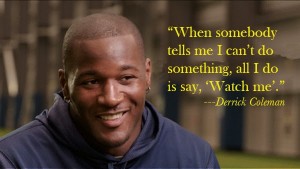 13. Deaf Athletes in Professional Sports:
13. Deaf Athletes in Professional Sports:
Seattle Seahawks player Derrick Coleman gained superstar status not only for his impressive athleticism, but because he proved that deafness does not have to be a barrier in professional sports. Coaches and scouts have taken note, and are now offering more deaf athletes the opportunities they deserve.
 12. Deaf Pioneers Leave Their Legacy:
12. Deaf Pioneers Leave Their Legacy:
Legendary Phyllis Frelich was the inspiration for, and the original star of, “Children of a Lesser God,” a revolutionary piece which introduced audiences to a complex, nuanced deaf character in a lead role. It won a Tony award for best play, and was later adapted into a film which won Marlee Matlin an Oscar. Frelich passed away this year, but her groundbreaking work has inspired and paved the way for generations of deaf performers to come.
In 2014, we also lost professor, writer, and poet Robert Panara. Panara helped translate classic works of literature into ASL, and was instrumental in the establishment of deaf studies higher education curriculum.
11. Violations of Deaf Citizens Rights Gain Mainstream Attention:
The tragic and deplorable treatment of deaf/HoH individuals by the criminal justice system is finally being exposed, thanks to the information age. Stories about deaf people being beaten by cops, wrongfully convicted, and abused in jail were widely read and shared across the internet; leading to an increase in awareness and outrage. While this is not exactly a victory, and certainly not cause for celebration, it has provided visibility to a very real problem and strengthened advocacy efforts.
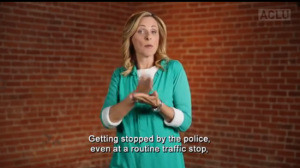 10. Marlee Matlin partners with ACLU and HEARD for #KnowYourRights videos:
10. Marlee Matlin partners with ACLU and HEARD for #KnowYourRights videos:
To help deaf citizens better understand and protect their legal rights, award-winning Deaf actress Marlee Matlin teamed up with the American Civil Liberties Union and Helping Educate to Advance the Rights of the Deaf to create a series of videos. The videos represent a larger movement within the Deaf community for self-empowerment through education. The internet amplifies the power of minority voices, exposes injustice, and provides resources for assertive self advocacy!
 9. Professional Dancer and His Deaf Mother Prove Music is for EVERYONE!
9. Professional Dancer and His Deaf Mother Prove Music is for EVERYONE!
Mark Villaver, a hearing dancer, and his Deaf mother share their love of music and dancing in one of the most FUN videos of 2014! Some people mistakenly think deaf people can’t enjoy music. This couldn’t be further from the truth!
8. FCC Cracks Down on Captioning:
The internet has come to the forefront of the entertainment industry. Unfortunately, closed captioning was often neglected when providers made the technology leap; leaving deaf individuals without online access to programming. In 2014 deadlines were set which require providers to caption all shows and video clips, and guidelines were established to guarantee the quality of captions. Over the next few years, we will see all major video content providers moving toward accessibility. Additionally, airlines and other places of public accommodation are feeling increased pressure to provide equal access for deaf patrons.
 7. Deaf Med Student Wins Legal Battle
7. Deaf Med Student Wins Legal Battle
After a lengthy court battle, it was determined that devoted deaf med students have the same right to attend medical school as hearing students. We call this a 2014 victory. Hopefully this will lead to more hardworking deaf young people pursuing careers in the medical field.

6. “The Tribe” Indie Film About Deaf Students Wins Over Critics:
The film, which is all sign language without subtitles, was critically acclaimed at Cannes and has won a number of prestigious awards. The lack of captions serves to alienate hearing viewers– who are accustomed to the privilege of communication access– yet the film is engaging enough to keep all audiences along for the ride.
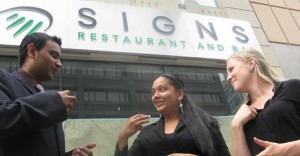 5. Signs Restaurant Opens in Toronto:
5. Signs Restaurant Opens in Toronto:
This fun concept for a restaurant creates a comfortable place for deaf diners; provides jobs for deaf food industry workers; and helps hearing people get a “taste” of what it’s like to be on the other side of the language barrier. The success of this endeavor may open the door for future deaf-focused businesses.
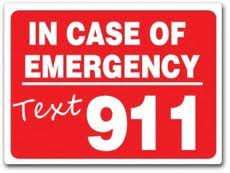 4. Text to 911 Rolls Out:
4. Text to 911 Rolls Out:
On August 8, 2014 the FCC adopted an order requiring wireless carriers and other text messaging providers to deliver emergency texts to 911 call centers. Equal access to emergency services was long overdue!
 3. ASL Rap Battle On Jimmy Kimmel Live:
3. ASL Rap Battle On Jimmy Kimmel Live:
This video instantly went viral because both deaf and hearing audiences love watching expressive ASL paired with hip hop beats. Sign language lends itself so well to the poetry and rhythm of raps. The two incredible interpreters skillfully turned spoken word into visual language, and Deaf performer Jo Rose Benfield wowed people with her enthusiastic interpretations.
 2. Deaf Superheroes Demonstrate the Power of Diversity:
2. Deaf Superheroes Demonstrate the Power of Diversity:
Throughout pop culture history, superheroes have struggled against the odds to save the day. Until recently, however, superheroes have been notoriously privileged individuals— white and able-bodied— 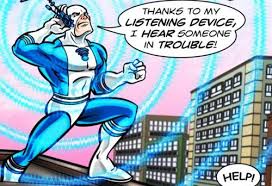 with very few deviations from the norm. In 2014, we saw diversity creeping into the fantasy world of good and evil when audiences were introduced to Deaf superheroes like Blue Ear and Superdeafy. These fictional heroes provide real life role models for Deaf children, demonstrating that deafness is only a minor obstacle to overcome on the way to greatness.
with very few deviations from the norm. In 2014, we saw diversity creeping into the fantasy world of good and evil when audiences were introduced to Deaf superheroes like Blue Ear and Superdeafy. These fictional heroes provide real life role models for Deaf children, demonstrating that deafness is only a minor obstacle to overcome on the way to greatness.
 1. Camp Mark Seven Goes Viral with “Happy” video:
1. Camp Mark Seven Goes Viral with “Happy” video:
If you haven’t seen this amazing upbeat video online, you must be living under a rock! Camp Mark Seven Deaf Film Camp nearly broke the internet with their cheerful ASL rendition of Pharrell Williams smash hit “Happy.” Camp Mark Seven teaches young deaf filmmakers how to write, direct, and produce their own films; which helps integrate more deaf voices in pop culture and Hollywood. The video has millions of views online and made people all across America stop and smile. Haven’t seen it?Well what are you waiting for… Get Happy !
2014 was an impressive year for deafness in the media, and these are only a few of the many pop culture moments! Of course we still have a long way to go, but when Deaf Culture becomes more visible, Deaf issues start getting the attention they deserve. By amplifying the voices of the community, and highlighting the accomplishments of deaf individuals, we can help the world see that deafness is not a barrier– merely a small obstacle on the way to greatness!
Have a safe and happy New Year!
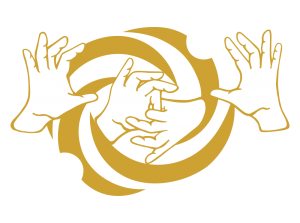

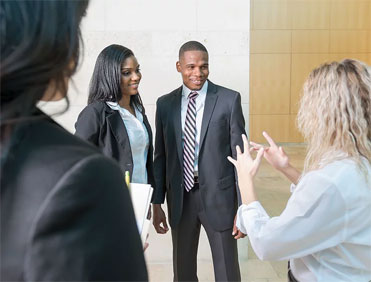

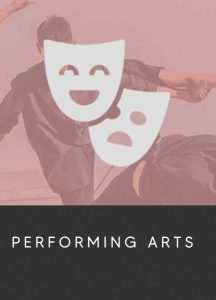
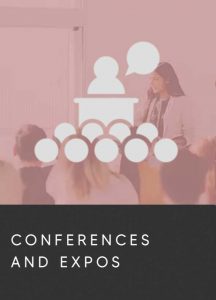
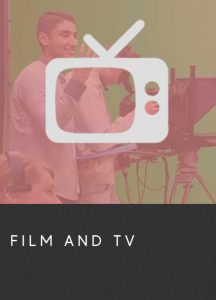
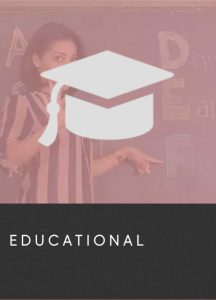
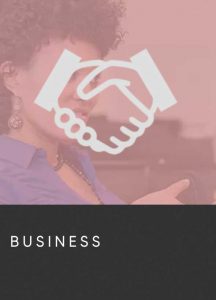


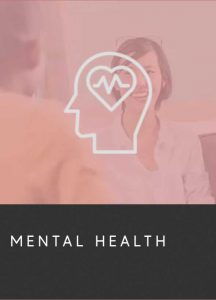
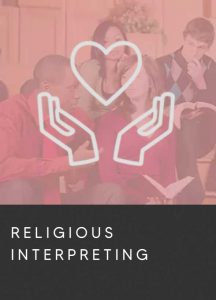
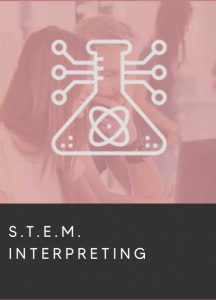
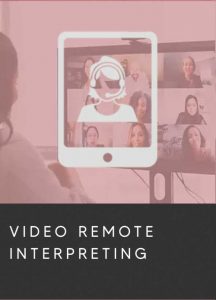
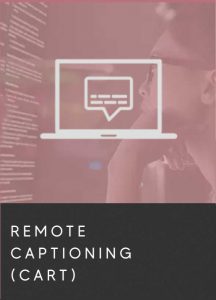


 The first step toward welcoming d/Deaf individuals to connect with an organization is to get a contract on file with a local interpreting agency that offers high quality
The first step toward welcoming d/Deaf individuals to connect with an organization is to get a contract on file with a local interpreting agency that offers high quality  Lately it seems like American Sign Language is everywhere! It’s been making appearances at musical performances and sporting events. It can be seen in news stories, comic books, movies, and TV shows. Pop stars are using it, sports mascots are using it, even
Lately it seems like American Sign Language is everywhere! It’s been making appearances at musical performances and sporting events. It can be seen in news stories, comic books, movies, and TV shows. Pop stars are using it, sports mascots are using it, even  Knowing how to sign opens up a whole new world — a place where words exist in 3-dimensions. ASL is a beautiful visual communication form which relies on body language and facial cues. It is emotional and highly expressive. If you’re a hearing person who wants to become a better listener, learning sign language can actually help! Sign language requires eye contact and attention to detail, which makes ASL users very perceptive to subtle changes in mood.
Knowing how to sign opens up a whole new world — a place where words exist in 3-dimensions. ASL is a beautiful visual communication form which relies on body language and facial cues. It is emotional and highly expressive. If you’re a hearing person who wants to become a better listener, learning sign language can actually help! Sign language requires eye contact and attention to detail, which makes ASL users very perceptive to subtle changes in mood. Besides breaking through the barriers between deaf and hearing culture, there are a number of other benefits to learning ASL. It makes you bilingual, which looks great on your resume. It allows you to communicate with people across a noisy room. Sometimes, such as the
Besides breaking through the barriers between deaf and hearing culture, there are a number of other benefits to learning ASL. It makes you bilingual, which looks great on your resume. It allows you to communicate with people across a noisy room. Sometimes, such as the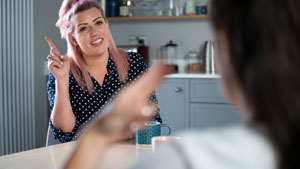 Hearing individuals who are interested in sign language have nothing to lose and everything to gain! ASL is fun to learn, and as American as apple pie. Learning a new language can be challenging, but moving outside our comfort zones encourages personal growth and development. Why limit your possibilities? You never know, maybe the romantic partner of your dreams is deaf. Not knowing sign language could prevent you from ever making that connection.
Hearing individuals who are interested in sign language have nothing to lose and everything to gain! ASL is fun to learn, and as American as apple pie. Learning a new language can be challenging, but moving outside our comfort zones encourages personal growth and development. Why limit your possibilities? You never know, maybe the romantic partner of your dreams is deaf. Not knowing sign language could prevent you from ever making that connection.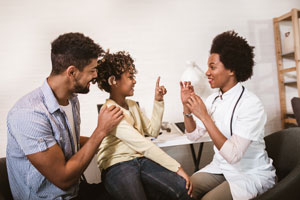 In addition to this brief list, there are hundreds of other sign language resources available online at very affordable prices. Of course, it is always best to learn one-on-one when possible. Be sure to look for classes in your community, or connect with an ASL instructor for a few structured lessons. Start today and before you know it, you will find yourself immersed in the fascinating culture of Deaf America!
In addition to this brief list, there are hundreds of other sign language resources available online at very affordable prices. Of course, it is always best to learn one-on-one when possible. Be sure to look for classes in your community, or connect with an ASL instructor for a few structured lessons. Start today and before you know it, you will find yourself immersed in the fascinating culture of Deaf America! 20. KODA Signs Holiday Concert for Deaf Parents:
20. KODA Signs Holiday Concert for Deaf Parents: 19. New Technologies Present New Possibilities:
19. New Technologies Present New Possibilities: 18. Deaf Interpreter demonstrates what equal access really looks like at Atlanta PRIDE:
18. Deaf Interpreter demonstrates what equal access really looks like at Atlanta PRIDE: 17. People in Costumes Using ASL with Kids:
17. People in Costumes Using ASL with Kids: 16. “Now Hear This” Premiers on Nickelodeon
16. “Now Hear This” Premiers on Nickelodeon 15. Deaf Interpreter goes Viral After NYC Ebola Press Conference
15. Deaf Interpreter goes Viral After NYC Ebola Press Conference 14. Popular TV Show “Fargo” Casts a Deaf Character who Uses ASL:
14. Popular TV Show “Fargo” Casts a Deaf Character who Uses ASL: 13. Deaf Athletes in Professional Sports:
13. Deaf Athletes in Professional Sports: 12. Deaf Pioneers Leave Their Legacy:
12. Deaf Pioneers Leave Their Legacy: 10. Marlee Matlin partners with ACLU and HEARD for #KnowYourRights videos:
10. Marlee Matlin partners with ACLU and HEARD for #KnowYourRights videos: 9. Professional Dancer and His Deaf Mother Prove Music is for EVERYONE!
9. Professional Dancer and His Deaf Mother Prove Music is for EVERYONE! 7. Deaf Med Student Wins Legal Battle
7. Deaf Med Student Wins Legal Battle
 5. Signs Restaurant Opens in Toronto:
5. Signs Restaurant Opens in Toronto: 4. Text to 911 Rolls Out:
4. Text to 911 Rolls Out: 3. ASL Rap Battle On Jimmy Kimmel Live:
3. ASL Rap Battle On Jimmy Kimmel Live: 2. Deaf Superheroes Demonstrate the Power of Diversity:
2. Deaf Superheroes Demonstrate the Power of Diversity: with very few deviations from the norm. In 2014, we saw diversity creeping into the fantasy world of good and evil when audiences were introduced to Deaf superheroes like Blue Ear and Superdeafy.
with very few deviations from the norm. In 2014, we saw diversity creeping into the fantasy world of good and evil when audiences were introduced to Deaf superheroes like Blue Ear and Superdeafy.  1. Camp Mark Seven Goes Viral with “Happy” video:
1. Camp Mark Seven Goes Viral with “Happy” video: Last week, Mayor Bill de Blasio addressed the citizens of New York to discuss the city’s first confirmed case of Ebola. During the press conference the mayor’s ASL interpreter,
Last week, Mayor Bill de Blasio addressed the citizens of New York to discuss the city’s first confirmed case of Ebola. During the press conference the mayor’s ASL interpreter, 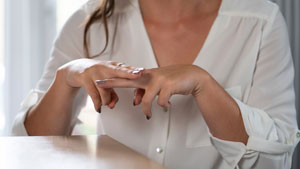 New York City is truly a melting pot with people of all ethnic backgrounds, education levels, and ability. In times when peoples’ health or lives might be in danger,
New York City is truly a melting pot with people of all ethnic backgrounds, education levels, and ability. In times when peoples’ health or lives might be in danger, 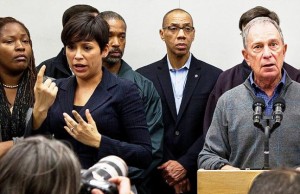 Deaf people who use sign language to communicate may read and write English quite well; or they may not know English at all. Many deaf people have excellent ASL skills, while others only know informal sign languages called “home signs.” Additionally, in a large city like New York there is a whole audience of foreign born deaf people for whom ASL is a second language.
Deaf people who use sign language to communicate may read and write English quite well; or they may not know English at all. Many deaf people have excellent ASL skills, while others only know informal sign languages called “home signs.” Additionally, in a large city like New York there is a whole audience of foreign born deaf people for whom ASL is a second language.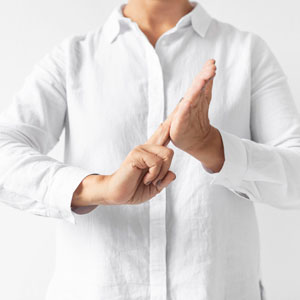 Delivering health and safety information is an important role, not an entertainment event. It puts a lot of pressure on ASL interpreters when their performance is judged not only by deaf consumers, but by hearing audiences who have little understanding of the job at hand.
Delivering health and safety information is an important role, not an entertainment event. It puts a lot of pressure on ASL interpreters when their performance is judged not only by deaf consumers, but by hearing audiences who have little understanding of the job at hand.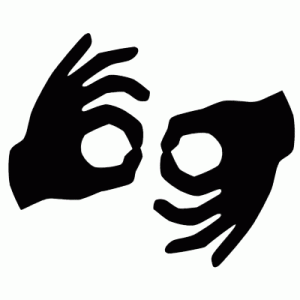 It’s wonderful when sign language gets so much Internet attention, because it provides new opportunities for mainstream society to become educated about Deaf culture. I think it is important that when general audiences to see ASL interpreters in the media, they understand the true the function we serve.
It’s wonderful when sign language gets so much Internet attention, because it provides new opportunities for mainstream society to become educated about Deaf culture. I think it is important that when general audiences to see ASL interpreters in the media, they understand the true the function we serve.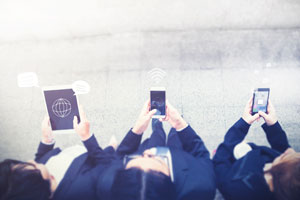 Often, people ask me “what is going on?” with Deaf culture. More than ever, we are seeing deaf individuals on TV, in the news, and
Often, people ask me “what is going on?” with Deaf culture. More than ever, we are seeing deaf individuals on TV, in the news, and 
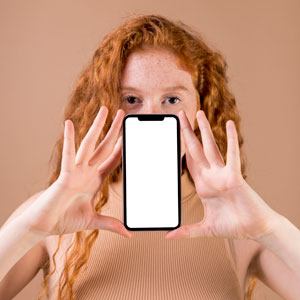 In the 1960s, the
In the 1960s, the 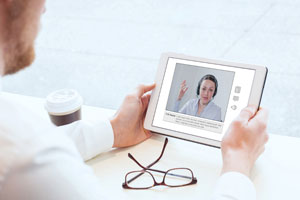 On the internet deaf people began to meet each other, explore Deaf culture more deeply, and express themselves just like everyone else. As Internet speeds got faster, uploading and streaming videos became simple. Instead of typing out their stories in English, deaf people could now comfortably record video in ASL. By captioning or doing voice-overs, deaf video bloggers could reach both deaf and hearing audiences. For the first time, deaf stories could be told by deaf people directly to mainstream audiences without a third party. Now the whole world can finally see that deaf people are individuals with their own personalities.
On the internet deaf people began to meet each other, explore Deaf culture more deeply, and express themselves just like everyone else. As Internet speeds got faster, uploading and streaming videos became simple. Instead of typing out their stories in English, deaf people could now comfortably record video in ASL. By captioning or doing voice-overs, deaf video bloggers could reach both deaf and hearing audiences. For the first time, deaf stories could be told by deaf people directly to mainstream audiences without a third party. Now the whole world can finally see that deaf people are individuals with their own personalities. This all takes us to our modern day — with the widespread use of texting, instant messaging, and video chats. The internet has become the biggest Deaf club in history! Deaf people are blogging, vlogging, and connecting instantly on any number of social networks. With the help of modern technology, deaf people have access to better education and communication than ever before. My deaf nieces are growing up in a world where they can call aunt Lydia on FaceTime, and tell me about their day using their native language: ASL. My deaf sister and I can text gossip back and forth, or I can just share a photo of the leaves in Central Park with my mother. I know I am blessed to live in a time where I can be so connected to my deaf family and friends, because it wasn’t always so easy.
This all takes us to our modern day — with the widespread use of texting, instant messaging, and video chats. The internet has become the biggest Deaf club in history! Deaf people are blogging, vlogging, and connecting instantly on any number of social networks. With the help of modern technology, deaf people have access to better education and communication than ever before. My deaf nieces are growing up in a world where they can call aunt Lydia on FaceTime, and tell me about their day using their native language: ASL. My deaf sister and I can text gossip back and forth, or I can just share a photo of the leaves in Central Park with my mother. I know I am blessed to live in a time where I can be so connected to my deaf family and friends, because it wasn’t always so easy. When people ask me why they are suddenly seeing so much about Deaf culture in the media, I can’t help but feel a sense of pride. From deep roots of oppression, Deaf Americans quietly cultivated a beautiful culture all their own. The internet allows hearing society to access a wealth of deaf art, music, poetry, news, and advocacy information. Using the tools of the modern age, the Deaf community is able to amplify it’s voice. Finally, the mainstream world is staring to listen.
When people ask me why they are suddenly seeing so much about Deaf culture in the media, I can’t help but feel a sense of pride. From deep roots of oppression, Deaf Americans quietly cultivated a beautiful culture all their own. The internet allows hearing society to access a wealth of deaf art, music, poetry, news, and advocacy information. Using the tools of the modern age, the Deaf community is able to amplify it’s voice. Finally, the mainstream world is staring to listen.





